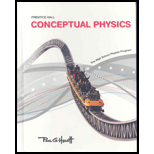
Concept explainers
a. Distinguish between a solar eclipse and a lunar eclipse.
b. Which type of eclipse is dangerous to your eyes if viewed directly?
(a)
The difference between the solar eclipse and lunar eclipse.
Explanation of Solution
Introduction:
The solar eclipse occurs when the Moon passes between the Sun and the Earth, its shadow creates a solar eclipse. The Lunar eclipse occurs when the Earth passes between Sun and Moon, its shadow creates a lunar eclipse.
| Solar Eclipse | Lunar Eclipse |
| 1. It occurs when the Moon present between the Sun and the Earth. | 1. It occurs between the Earth present between the Moon and Earth. |
| 2. It happens every 18 months. | 2. It happens two times a year. |
| 3. It lasts for about 5-7 minutes. | 3. It lasts for an hour. |
| 4. It occurs in the night time. | 4. It occurs during the day time. |
| 5. Solar eclipses are rarer and they can only be seen by a narrow segment on Earth, for a short period of time. | 5. Lunar eclipses can be seen more readily than solar eclipses and from a greater portion of the Earth. |
Conclusion:
When the Earth or the Moon gets in the way of the Sun’s light the eclipses are occur.
(b)
The type of eclipse is dangerous when viewed directly.
Explanation of Solution
Introduction:
There are two kinds of eclipses on the Earth. They are an eclipse of the Moon and the eclipse of the Sun.
A solar eclipse occurs when the moon passes in between the Sun and the Earth. During a solar eclipse, it is dangerous if you look the smallest part of the partial eclipse including annular eclipse. Because during this solar eclipse it radiates UV (Ultraviolet) and IR (Infrared radiation), this will affect the retina of the eye.
Conclusion:
Partial eclipse including annular eclipse is dangerous to eyes if you see directly.
Chapter 27 Solutions
Conceptual Physics: The High School Physics Program
Additional Science Textbook Solutions
Conceptual Integrated Science
Physics for Scientists and Engineers: A Strategic Approach, Vol. 1 (Chs 1-21) (4th Edition)
College Physics: A Strategic Approach (4th Edition)
Physics (5th Edition)
College Physics: A Strategic Approach (3rd Edition)
 College PhysicsPhysicsISBN:9781305952300Author:Raymond A. Serway, Chris VuillePublisher:Cengage Learning
College PhysicsPhysicsISBN:9781305952300Author:Raymond A. Serway, Chris VuillePublisher:Cengage Learning University Physics (14th Edition)PhysicsISBN:9780133969290Author:Hugh D. Young, Roger A. FreedmanPublisher:PEARSON
University Physics (14th Edition)PhysicsISBN:9780133969290Author:Hugh D. Young, Roger A. FreedmanPublisher:PEARSON Introduction To Quantum MechanicsPhysicsISBN:9781107189638Author:Griffiths, David J., Schroeter, Darrell F.Publisher:Cambridge University Press
Introduction To Quantum MechanicsPhysicsISBN:9781107189638Author:Griffiths, David J., Schroeter, Darrell F.Publisher:Cambridge University Press Physics for Scientists and EngineersPhysicsISBN:9781337553278Author:Raymond A. Serway, John W. JewettPublisher:Cengage Learning
Physics for Scientists and EngineersPhysicsISBN:9781337553278Author:Raymond A. Serway, John W. JewettPublisher:Cengage Learning Lecture- Tutorials for Introductory AstronomyPhysicsISBN:9780321820464Author:Edward E. Prather, Tim P. Slater, Jeff P. Adams, Gina BrissendenPublisher:Addison-Wesley
Lecture- Tutorials for Introductory AstronomyPhysicsISBN:9780321820464Author:Edward E. Prather, Tim P. Slater, Jeff P. Adams, Gina BrissendenPublisher:Addison-Wesley College Physics: A Strategic Approach (4th Editio...PhysicsISBN:9780134609034Author:Randall D. Knight (Professor Emeritus), Brian Jones, Stuart FieldPublisher:PEARSON
College Physics: A Strategic Approach (4th Editio...PhysicsISBN:9780134609034Author:Randall D. Knight (Professor Emeritus), Brian Jones, Stuart FieldPublisher:PEARSON





